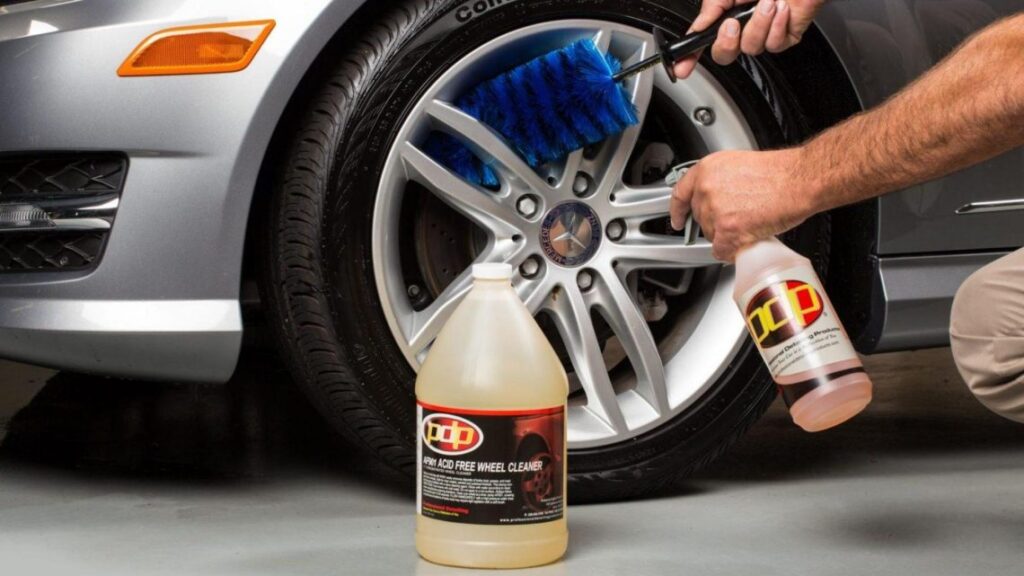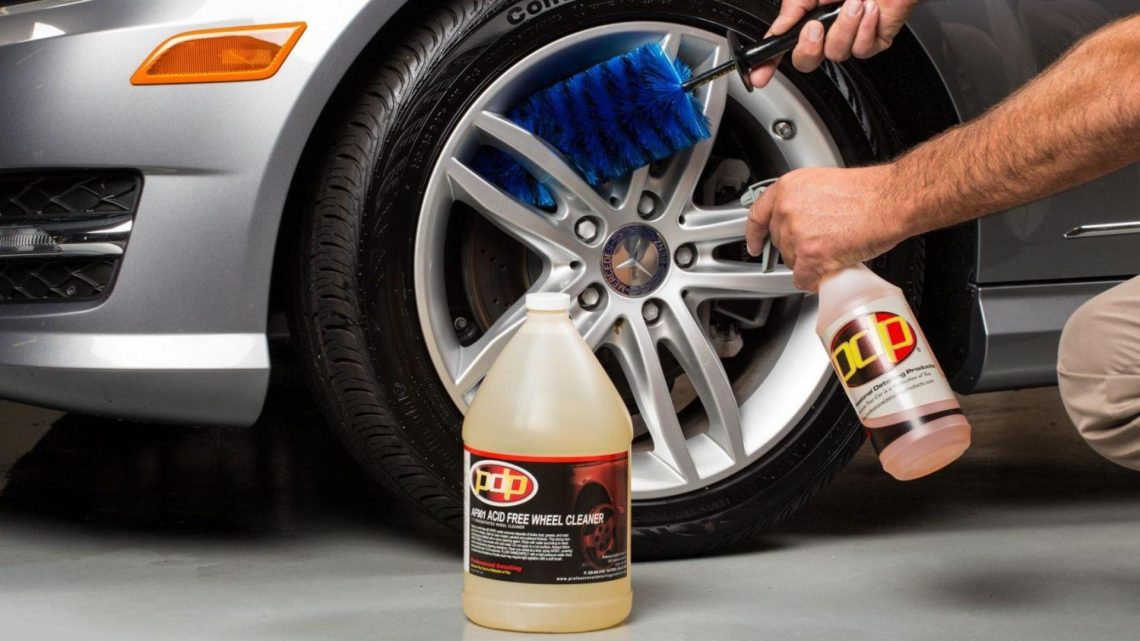
The Definitive Guide to the Best Cleaner for Brake Dust: Keep Your Wheels Sparkling
Brake dust. Just the words can send shivers down the spine of any car enthusiast. That fine, gritty substance that clings stubbornly to your wheels, dulling their shine and making your prized vehicle look neglected. Finding the best cleaner for brake dust is crucial for maintaining the appearance of your car and protecting your wheels from long-term damage. But with so many products on the market, how do you choose the right one? This comprehensive guide will walk you through everything you need to know, from understanding what brake dust is to selecting the best cleaner for brake dust for your specific needs.
Understanding Brake Dust: The Silent Enemy of Your Wheels
Before diving into the world of cleaners, it’s important to understand what brake dust actually is. It’s primarily composed of metallic particles shed from your brake pads and rotors as they wear down during braking. This mixture also includes carbon fibers and adhesive residue. The heat generated during braking causes these materials to bond to your wheels, making them difficult to remove with ordinary soap and water. This is why using the best cleaner for brake dust is so important.
Not only is brake dust unsightly, but it can also be corrosive. Over time, it can etch into the finish of your wheels, causing permanent damage. This is especially true for alloy wheels, which are more susceptible to corrosion. Therefore, regular cleaning with the best cleaner for brake dust is essential to preserve the integrity and appearance of your wheels.
Factors to Consider When Choosing a Brake Dust Cleaner
Choosing the best cleaner for brake dust isn’t as simple as grabbing the first bottle you see on the shelf. Several factors should influence your decision:
- Wheel Material: Different wheel materials require different types of cleaners. Some cleaners are safe for all wheel types, while others are specifically formulated for alloy, chrome, or painted wheels. Using the wrong cleaner can damage your wheels. Always check the product label to ensure compatibility.
- Cleaning Power: The severity of brake dust buildup will determine the cleaning power you need. For light dust, a mild cleaner may suffice. However, for heavy buildup, you’ll need a stronger, more aggressive formula.
- pH Level: Brake dust cleaners can be acidic, neutral, or alkaline. Acidic cleaners are generally more effective at removing stubborn brake dust, but they can also be more corrosive. Neutral cleaners are gentler but may require more scrubbing. Alkaline cleaners are good for removing grease and grime.
- Ease of Use: Consider the application method and dwell time. Some cleaners are spray-on, rinse-off formulas, while others require agitation with a brush. Choose a cleaner that fits your cleaning routine and preferences.
- Safety: Always wear gloves and eye protection when using brake dust cleaners. Avoid inhaling the fumes and ensure proper ventilation. Choose a cleaner that is environmentally friendly and biodegradable if possible.
Types of Brake Dust Cleaners
Brake dust cleaners generally fall into a few categories:
- Acid-Based Cleaners: These are powerful cleaners that quickly dissolve brake dust. However, they can be corrosive and should be used with caution. Always dilute them according to the manufacturer’s instructions and avoid contact with skin and paint.
- Alkaline-Based Cleaners: These cleaners are effective at removing grease and grime, but they may not be as effective on heavy brake dust buildup. They are generally safer than acid-based cleaners.
- pH-Neutral Cleaners: These cleaners offer a good balance of cleaning power and safety. They are gentle on wheels but may require more scrubbing. They are a good choice for regular cleaning and maintenance.
- Iron Removers: These specialized cleaners contain chemicals that react with iron particles in brake dust, turning them purple and making them easier to remove. They are very effective at removing stubborn brake dust and are generally safe for most wheel types.
Top Brake Dust Cleaner Recommendations
Based on performance, safety, and user reviews, here are some of the best cleaner for brake dust options available:
- Meguiar’s Ultimate All Wheel Cleaner: A popular choice for its effectiveness and ease of use. It’s a pH-neutral formula that’s safe for all wheel types.
- Sonax Wheel Cleaner Full Effect: An iron remover that effectively dissolves brake dust and turns purple as it works. It’s safe for most wheel types and leaves a protective coating.
- Adam’s Polishes Wheel Cleaner: A pH-neutral cleaner that’s safe for all wheel types and finishes. It’s effective at removing brake dust and road grime.
- Chemical Guys Diablo Wheel Gel: A thick gel that clings to wheels and effectively dissolves brake dust. It’s pH-balanced and safe for most wheel types.
- P21S Gel Wheel Cleaner: A gentle yet effective cleaner that’s safe for delicate wheel finishes. It’s a good choice for high-end wheels.
These are just a few of the many excellent brake dust cleaners on the market. Ultimately, the best cleaner for brake dust for you will depend on your specific needs and preferences. [See also: How to Detail Your Car Like a Pro] Always read the product label and follow the manufacturer’s instructions.
Step-by-Step Guide to Cleaning Brake Dust
Here’s a step-by-step guide to cleaning brake dust using the best cleaner for brake dust:
- Gather Your Supplies: You’ll need a brake dust cleaner, a wheel brush, a wash mitt, a hose with a spray nozzle, and a bucket of water.
- Rinse Your Wheels: Use the hose to rinse your wheels thoroughly, removing any loose dirt and debris.
- Apply the Cleaner: Spray the brake dust cleaner liberally onto your wheels, following the manufacturer’s instructions.
- Let it Dwell: Allow the cleaner to dwell for the recommended time, typically a few minutes.
- Agitate with a Brush: Use a wheel brush to agitate the cleaner, paying attention to hard-to-reach areas.
- Rinse Thoroughly: Rinse your wheels thoroughly with the hose, ensuring all traces of the cleaner are removed.
- Dry Your Wheels: Use a clean microfiber towel to dry your wheels, preventing water spots.
- Apply a Wheel Protectant (Optional): For added protection, apply a wheel protectant to help prevent brake dust from sticking to your wheels in the future.
Tips for Preventing Brake Dust Buildup
While finding the best cleaner for brake dust is important, preventing buildup in the first place is even better. Here are a few tips:
- Use Low-Dust Brake Pads: Consider switching to low-dust brake pads, which produce significantly less brake dust.
- Apply a Wheel Protectant: Wheel protectants create a barrier that helps prevent brake dust from sticking to your wheels.
- Wash Your Wheels Regularly: Regular washing will prevent brake dust from building up and etching into the finish of your wheels.
The Long-Term Benefits of Using the Best Cleaner for Brake Dust
Investing in the best cleaner for brake dust and incorporating regular wheel cleaning into your car care routine offers numerous long-term benefits:
- Preserves Wheel Appearance: Regular cleaning prevents brake dust from dulling the shine of your wheels, keeping them looking their best.
- Prevents Corrosion: Brake dust is corrosive and can damage your wheels over time. Regular cleaning removes the corrosive elements and protects your wheels from damage.
- Maintains Resale Value: Well-maintained wheels enhance the overall appearance of your car and contribute to its resale value.
- Improves Driving Safety: Clean wheels allow for better heat dissipation, which can improve braking performance.
Beyond the Basics: Advanced Brake Dust Cleaning Techniques
For those who demand perfection, here are some advanced techniques to consider when using the best cleaner for brake dust:
- Clay Bar Treatment: For stubborn brake dust that won’t come off with regular cleaning, try using a clay bar. The clay bar will lift embedded contaminants from the surface of your wheels.
- Wheel Polishing: For wheels with scratches or swirl marks, consider polishing them with a wheel polish. This will restore the shine and remove imperfections.
- Ceramic Coating: Applying a ceramic coating to your wheels provides long-lasting protection against brake dust and makes cleaning easier.
Choosing the best cleaner for brake dust doesn’t have to be a daunting task. By understanding the factors to consider, exploring the different types of cleaners, and following the steps outlined in this guide, you can keep your wheels sparkling and protect them from long-term damage. Remember to prioritize safety, choose a cleaner that’s compatible with your wheel material, and incorporate regular cleaning into your car care routine. [See also: The Ultimate Guide to Car Waxing] With a little effort, you can say goodbye to brake dust and hello to gleaming, well-maintained wheels.

